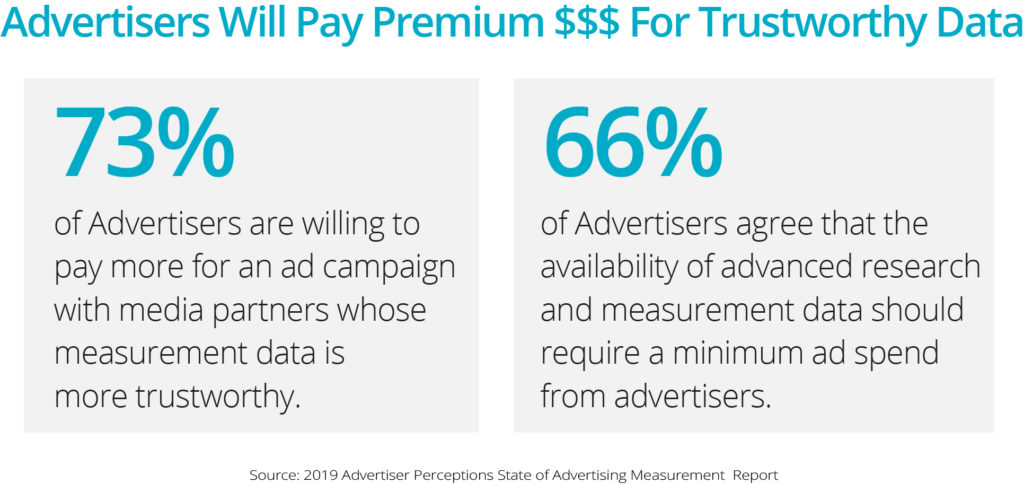Dear Media Sellers: It’s not your imagination, advertisers are more dependent on data – more than anything else – for the best decision-making. In fact, we see an overwhelming majority of advertisers say the availability of high quality, actionable measurement has “some and/or strong” impact on which media partners they select. For ad sellers, this is either an opportunity to exceed client expectations or a good time to take a long vacation.
 To get you on the right track with a powerful ad measurement program, we dug into recent research Advertiser Perceptions conducted on the state of advertising measurement [link to webinar], and pulled out some clear, simple tips. This is how you become Master of Metrics:
To get you on the right track with a powerful ad measurement program, we dug into recent research Advertiser Perceptions conducted on the state of advertising measurement [link to webinar], and pulled out some clear, simple tips. This is how you become Master of Metrics:
- Create context.
Benchmarks aren’t particularly exciting until you can add successive measurement against that benchmark, which brings context. In order to get a satisfying reaction out of your clients when you present ad impact data (and answer that question, “Is this good?”), you’ve gotta give them context. That comes from benchmark data. Internal benchmarks are the most important, followed by competitive benchmarks. When you’re setting up your measurement program with a client, these basics are your first step- so things can get exciting later.
- Measure what matters.
Get crystal clear on the campaign goals and KPIs. For two in five advertisers, measurement offered by media companies often does not align with internal KPIs. So understanding their ultimate goals can help you guide the measurement program toward the metrics that will be most meaningful. If some of those desired metrics aren’t yet available, you can come up with alternative metrics that are still in line with the campaign goals and KPIs, since you now understand what those are.
- Get serious about fraud measurement.
For advertisers and marketers, the question of fraud gets louder every day. How many of my impressions were seen by a human? Over 40 percent of advertisers self-report that 10% to 25% of their ad spend is wasted to bots and fraud. As an ad seller, you need to be able to answer this question with absolute confidence. This means investing in fraud measurement tools. (Check out IAS.) [link] Which means you’ll immediately elevate the value of your data to your clients.
- You can do real-time measurement.
We know that most advertisers and marketers consider a twice-weekly report “real-time.” You can do this! Add it to your list of capabilities.
- Don’t data dump.
When it comes to delivering your precious, most valuable data, think first about how your advertising client would want to see that data. Is a flashy presentation really the best method? Our research told us that advertisers and marketers want to sync all data on an internal dashboard. Your metrics will ultimately be more useable to your client if they can absorb them in a familiar context. So take that extra step and offer this integration via API. This is how you become a preferred partner.

